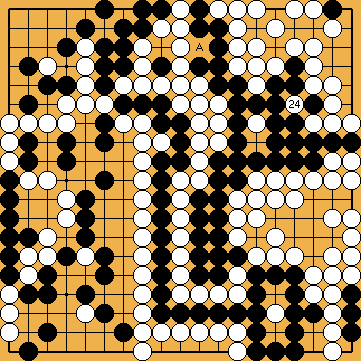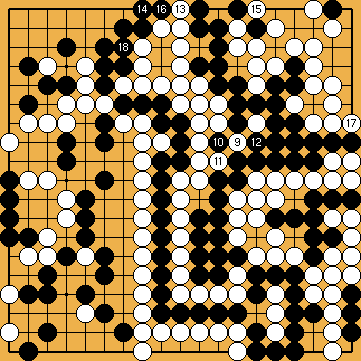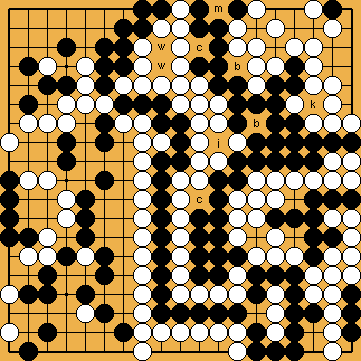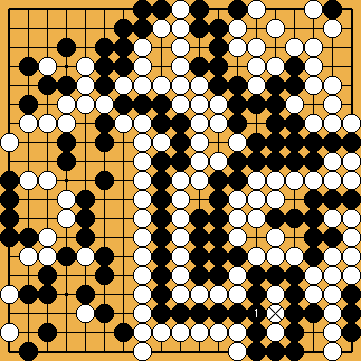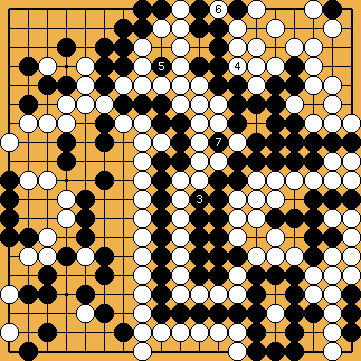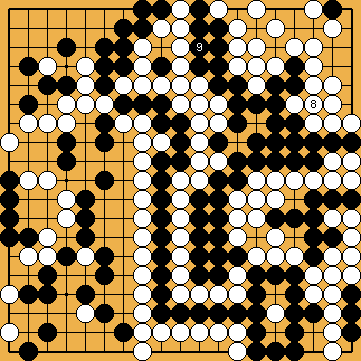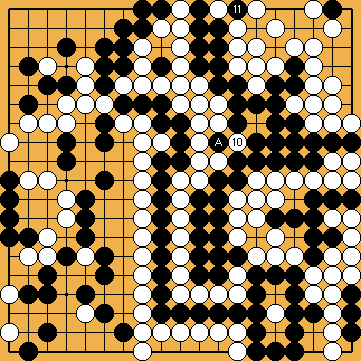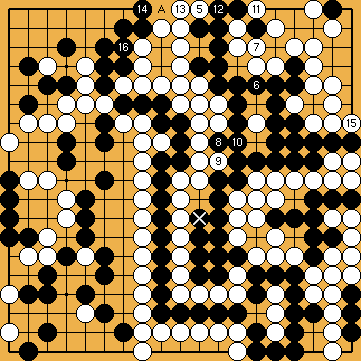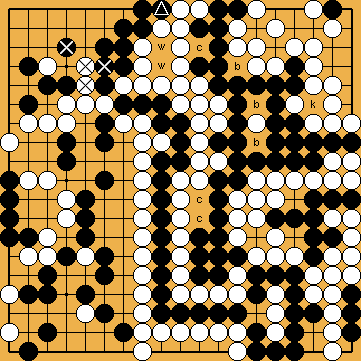Joachim's Ko-Semeai - Putting the Cart
Before the Horse (2013 - 2015)
12c - White Creates Another Ko-Shape
in the Centre
|
In many cases, Michael Redmond's kikashi of |
|
|
|
White's group has five liberties (w, 2 * c, j, m), Black's group has seven liberties (2 * c, b, 2 * k, j, m). This is the "usual" relationship of liberties with Joachim's Ko-Semeai, but we can assume that the shared double-ko in the centre will benefit White. |
|
|
|
There is nothing that Black could to with the shared double-ko of |
|
///:
Therefore, Black will play the sagari of |
|
After the changed preparatory sequence, White's group has five liberties (2 * w, 2 * c, j), Black's group has seven liberties (2 * c, b, 2 * k, j, m). This is the "usual" relationship of liberties with Joachim's Ko-Semeai, but we can assume that the double-ko with his group (in the centre, and on the upper edge) will benefit Black. |
|
|
|
|
|
|
|
///:
|
|
After the changed preparatory sequence, White's group has five liberties (w, 2 * c, j, m), Black's group has only six liberties (2 * c, b, k, j, m). Despite the various ko-shapes, Black seems to have lost a decisive liberty. |
|
|
|
Continuing with occupying liberties, with a move at |
|
///:
|
|
White's group has five liberties (2 * w, 2 * c, m), Black's group has only six liberties (2 * c, 2 * b, k, m) again. |
|
|
|
Black's suicidal ko-threat at |
|
///:
|
|
|
|
White's group has five liberties (2 * w, 3 * c), Black's group has seven liberties (3 * c, 2 * b, k, m). |
|
We added the beginning |
|
|
|
|
|
|
|
|
|
|
|
|
|
///:
|
|
White's group has five liberties (2 * w, 2 * c, j), Black's group has seven liberties (2 * c, 2 * b, k, j, m). |
|
|
|
|
|
|
|
|
|
///:
If Black throws-in at We will show here that it is now much too late for Black to build a larger eye in the centre. At the end of this preparatory sequence, White's centre group still has an outside liberty left. Therefore, we will shift |
|
White's group has five liberties (2 * w, 3 * c), Black's group has seven liberties (3 * c, 3 * b, k). This is the "usual" relationship of liberties with Joachim's Ko-Semeai, so White will win the fight. However - seen overall - it might be advisable for White to not play her kikashi of |
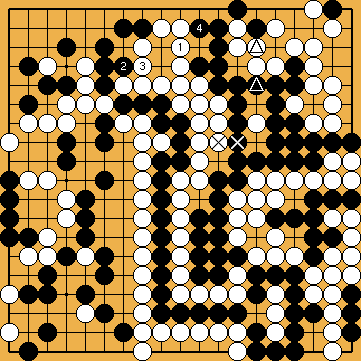
 :
: , I apparently forgot about one important fact: Black will not get both the move at
, I apparently forgot about one important fact: Black will not get both the move at  /
/  in the centre.
in the centre. /
/  in the bamboo joint will not have been played, too. We will take it off the board, in order to make the following sequences more comprehensible.
in the bamboo joint will not have been played, too. We will take it off the board, in order to make the following sequences more comprehensible.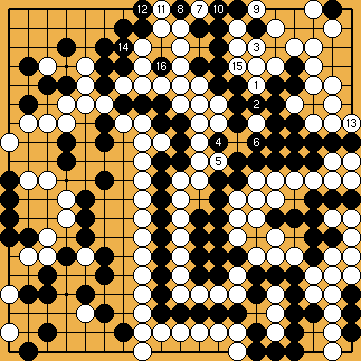
 :
: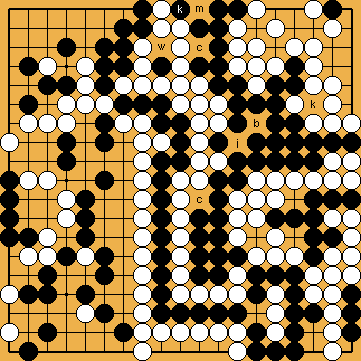
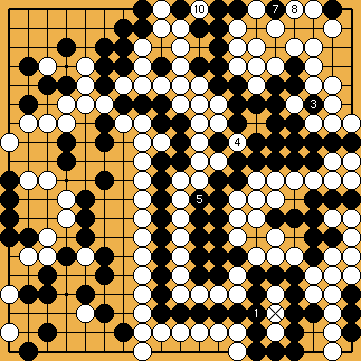
 @
@  ;
; 
 :
: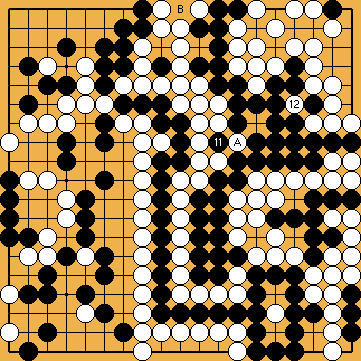
 :
: /
/  , which works in White's favour. Therefore, White will win the game with ease.
, which works in White's favour. Therefore, White will win the game with ease.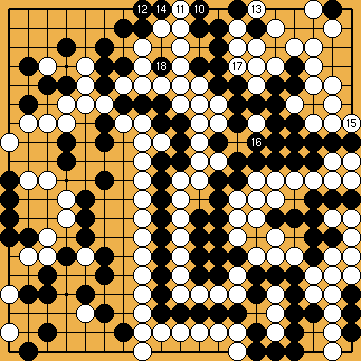
 :
: .
.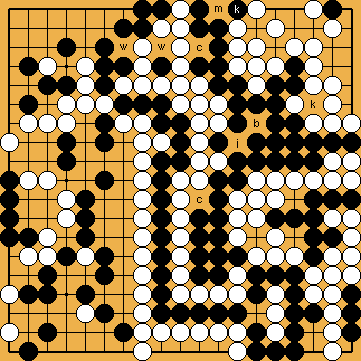
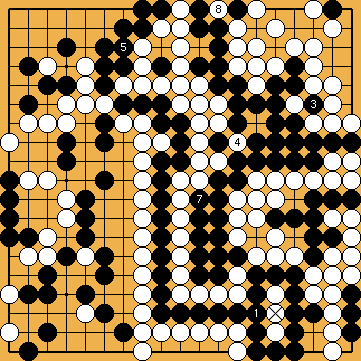
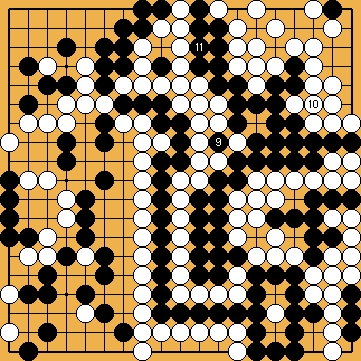
 :
: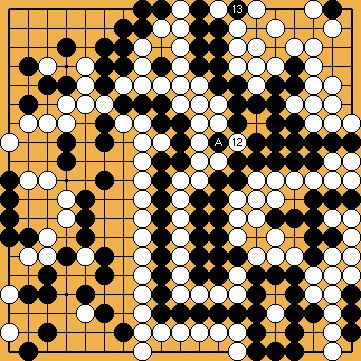
 :
: , so giving atari on White's group.
, so giving atari on White's group.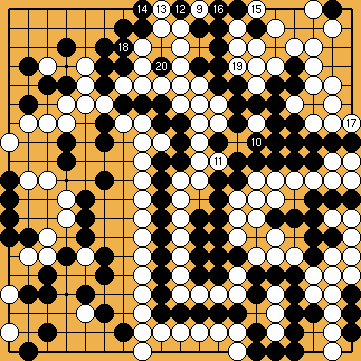
 :
: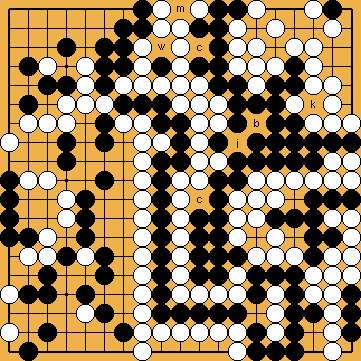
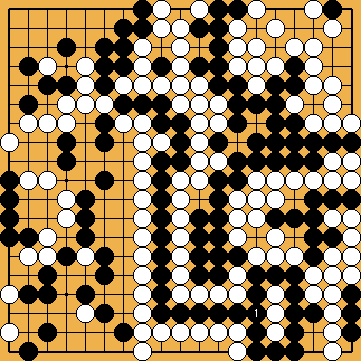
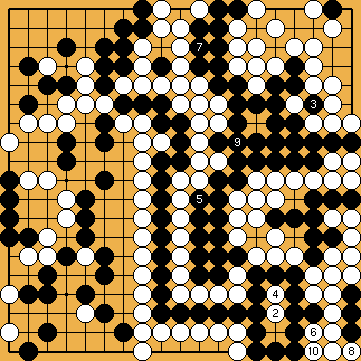
 :
: instead, will not work either. White will connect the ko at
instead, will not work either. White will connect the ko at  ; the shared double-ko remains in the centre, so Black will be unable to capture White's group there.
; the shared double-ko remains in the centre, so Black will be unable to capture White's group there.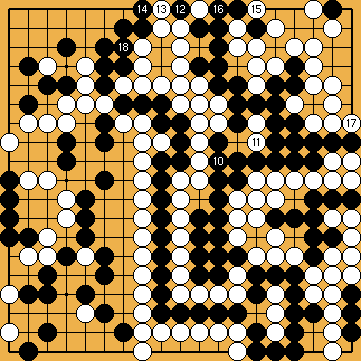
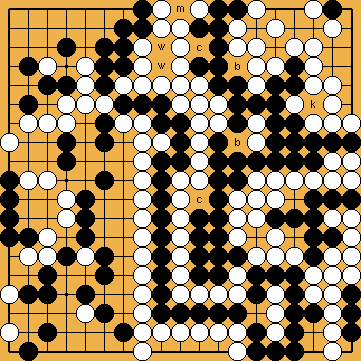
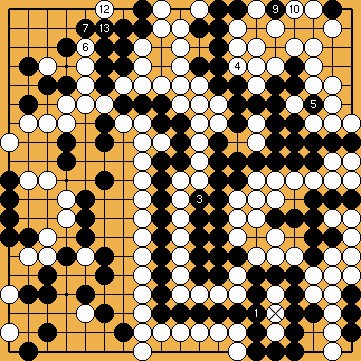
 ;
; 
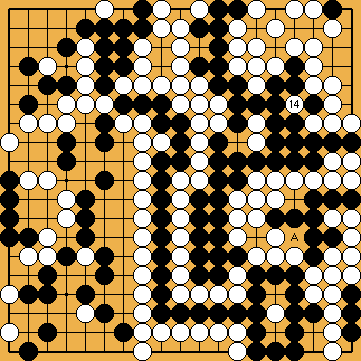
 :
: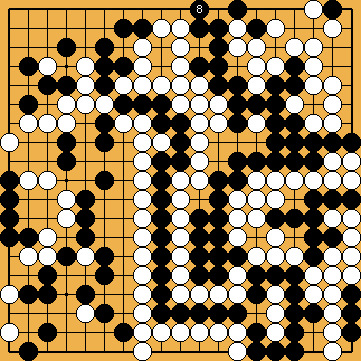
 :
: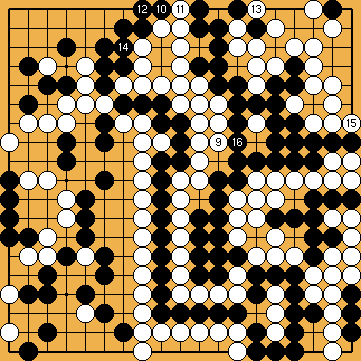
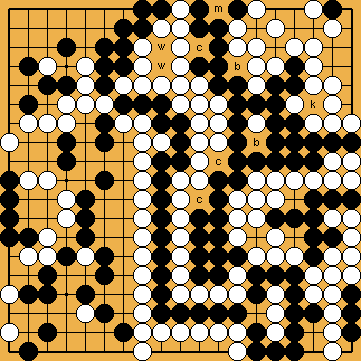
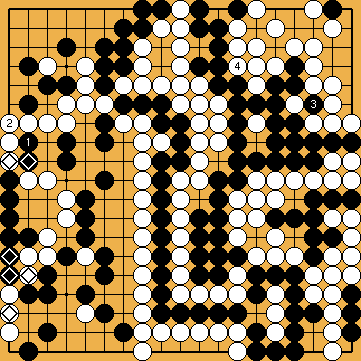
 /
/  of the Nakade Sequence to make this ko-threat more comprehensible.
of the Nakade Sequence to make this ko-threat more comprehensible.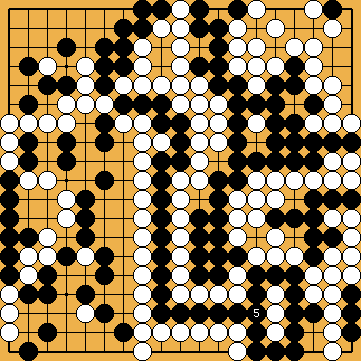
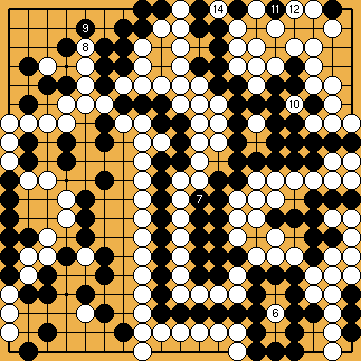
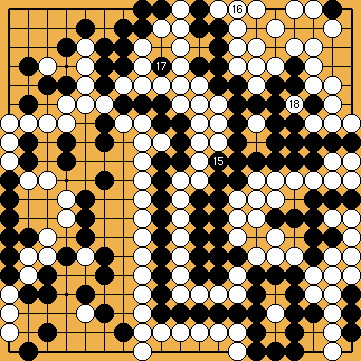
 :
: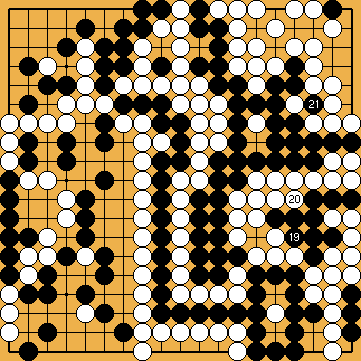
 :
: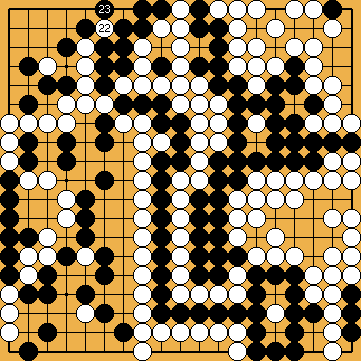
 :
: